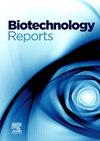Xenogeneic-free platform for the isolation and scalable expansion of human bladder smooth muscle cells
Q1 Immunology and Microbiology
引用次数: 0
Abstract
Introduction
Smooth muscle cells (SMC) play a crucial role in bladder tissue engineering strategies. Scalable, Good Manufacturing Practice (GMP)-compliant platforms are essential for producing clinically relevant cell numbers.
Materials & Methods
A gamma-irradiated human platelet lysate (HPL) supplement was used to develop a xeno(geneic)-free process for the isolation and scalable expansion of human bladder-derived SMC.
Results
Cells were isolated using an explant-based technique and expanded ex vivo, expressing typical SMC markers (α-SMA, desmin, caldesmon and SM22-α). Cell culture was successfully scaled-up using spinner flasks combined with plastic microcarriers, starting with a 2.8 × 103 cells/cm2 inoculum (i.e. 1 × 106 cells). Cell-microcarrier adhesion rates exceeded 80% within 24 hours with fold expansion ranging from 3.5 to 16.8 after 7 days, dependent on donor variability. Harvested cells retained their SMC phenotype.
Conclusions
This xeno-free, GMP compliant process enables scalable manufacturing of human bladder-derived SMC while preserving cell identity, potentially advancing clinical applications in bladder engineering.
用于分离和扩增人膀胱平滑肌细胞的无异种平台
平滑肌细胞在膀胱组织工程策略中起着至关重要的作用。可扩展的、符合良好生产规范(GMP)的平台对于生产临床相关细胞数量至关重要。材料,方法采用γ射线辐照的人血小板裂解液(HPL)补充物,建立无xeno(基因)分离和扩展人膀胱源性SMC的工艺。结果采用外植体技术分离细胞并在体外扩增,表达典型的SMC标志物(α-SMA、desmin、caldesmon和SM22-α)。使用旋转烧瓶结合塑料微载体成功扩大细胞培养规模,接种量为2.8 × 103个细胞/cm2(即1 × 106个细胞)。细胞微载体黏附率在24小时内超过80%,7天后的倍数从3.5到16.8不等,取决于供体的变异。收获的细胞保留其SMC表型。结论:这种无xeno、符合GMP的工艺可以在保持细胞特性的同时可扩展地制造人类膀胱来源的SMC,潜在地推进膀胱工程的临床应用。
本文章由计算机程序翻译,如有差异,请以英文原文为准。
求助全文
约1分钟内获得全文
求助全文
来源期刊

Biotechnology Reports
Immunology and Microbiology-Applied Microbiology and Biotechnology
CiteScore
15.80
自引率
0.00%
发文量
79
审稿时长
55 days
期刊介绍:
Biotechnology Reports covers all aspects of Biotechnology particularly those reports that are useful and informative and that will be of value to other researchers in related fields. Biotechnology Reports loves ground breaking science, but will also accept good science that can be of use to the biotechnology community. The journal maintains a high quality peer review where submissions are considered on the basis of scientific validity and technical quality. Acceptable paper types are research articles (short or full communications), methods, mini-reviews, and commentaries in the following areas: Healthcare and pharmaceutical biotechnology Agricultural and food biotechnology Environmental biotechnology Molecular biology, cell and tissue engineering and synthetic biology Industrial biotechnology, biofuels and bioenergy Nanobiotechnology Bioinformatics & systems biology New processes and products in biotechnology, bioprocess engineering.
 求助内容:
求助内容: 应助结果提醒方式:
应助结果提醒方式:


